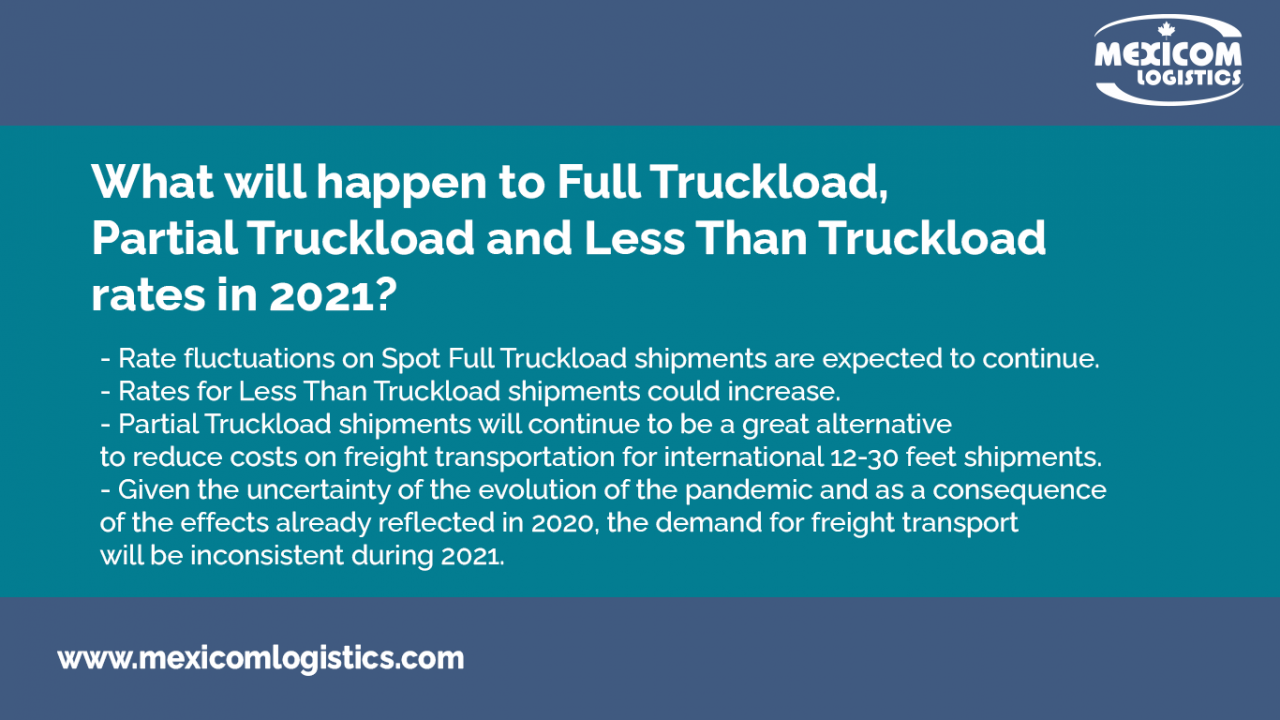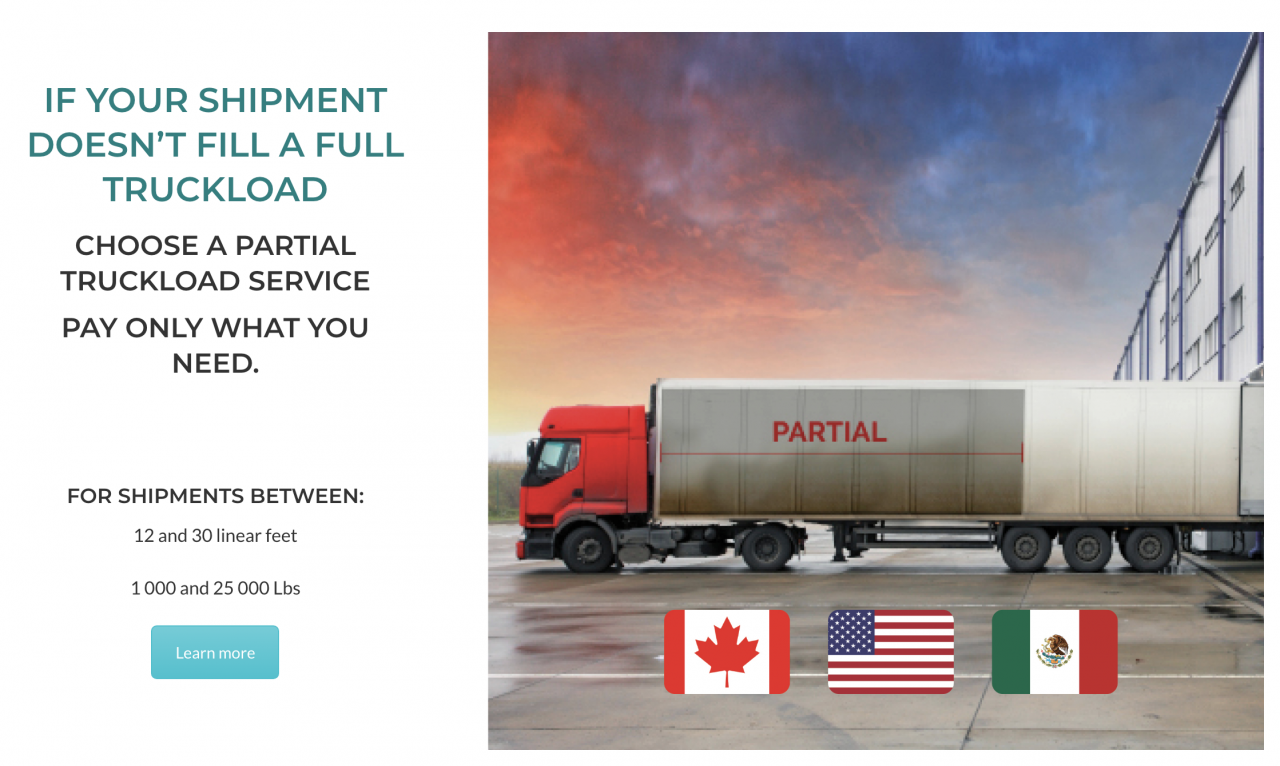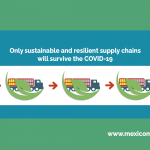Ground transportation outlook for Q1 2021 in Canada, the U.S. and Mexico
While the pandemic of COVID-19 keeps going and it’s economic impact has become visible, the forecasts for ground transportation in 2021 aren’t conclusive. The USMCA, the new administration in the United States and the new trends in freight transport will have a great impact on the ground transportation outlook of the next year.
USMCA and the relationship between Mexico, U.S. and Canada
After the renegotiation of the United States-Mexico-Canada Agreement (USMCA), new guidelines were defined so that the border freight transport sector can benefit. The main purpose of the agreement has been met by setting competitive conditions in the three nations.
During Trump’s administration, the relocation of production facilities to the american territory could help Mexico to be one of its most important land connections, says Alejandrina Barajas, Professor at the Center for Economic Research of the Northwest, interviewed by the site tyt.com.mx. Barajas considers that after the lack of certainty and economic growth during the COVID-19 crisis, the USMCA “can serve as an anchor to generate growth expectations in the short and medium terms.”
According to the same publication, the challenge for Mexico is to take advantage of opportunities and be more competitive. In addition, Carlos Robles, coordinator of the International Business Degree at CETYS Universidad campus Ensenada, mentions that the victory of Joe Biden as president of the U.S. and his focus on the use and development of clean technology could have repercussions with regulations and demands on carriers to adapt their infrastructure.
In the case of Canada, the relationship is different, since Mexico ranks tenth in investment destinations in that country and 39.7% of this investment went to mining. In an article in Forbes, Ildefonso Guajardo, the USMCA negotiator and former Secretary of the Economy, commented that the agreement will boost the attraction of investment to the region to promote North American integration. Besides, the rise in demand for regional content in the USMCA will be coupled favorably with the adjustment that will come in the value chains after COVID-19.
Effects of COVID-19 in freight transportation
During the COVID-19 pandemic, from March to December 2020, countries implemented restrictions for transit across the border. In the case of Mexico, the U.S. and Canada, governments implemented them for non-essential traffic.
These limitations imply that the citizens of both countries cannot cross the borders, unless it was for labor or trade reasons. In a report presented by the Mexican Institute of Transportation (IMT), as of March 2020, the freight transport sector showed less dynamism compared to the same period in previous years.
New state and federal regulations in the aftermath of the pandemic will continue to impact the industry on the ground transportation outlook for 2021, particularly in the wake of a significant change in customers.
As one of the responses to the COVID-19 pandemic, the Federal Motor Carrier Safety Administration (FMCSA) hours of service were updated to be more flexible with drivers. These changes included increasing the driving window time during adverse conditions, changes to the short trip allowance, and modifications to mandatory rest rules. The continuity of these measures predicted in the international ground transportation outlook of 2021, requires a greater planning of the trips on the part of shippers and logistics companies.
2021: change in the U.S. administration
A president like Joe Biden is likely to keep a close eye on the respect of contracts for U.S. investments abroad. The complicated thing, according to another note published in El financiero, will be for the U.S. government to prioritize clean energy projects, since it is likely that companies in this field will seek markets where they have greater economic and legal support.
In this topic, Jay Bryson, Managing Director and Chief Economist of Corporate Banking and Investment at Wells Fargo, comments that the arrival of Biden is a good one for his idea of maintaining the fiscal stimulus. He says that there is more spending on infrastructure that will boost the growth of the U.S. economy.
2021: Canada investments in the energy sector
In the case of the other member of the USMCA, the Canadian Chamber of Commerce in Mexico (Cancham) requested Mexico to be a “serious and reliable” commercial partner that allows attracting investments within the USMCA, especially in the energy sector.
Canadian companies are very interested in Mexico in oil and gas transportation. “The great area of opportunity is to bring technology and Canadian know-how in the transportation of gas and oil, because if you look at the map of Mexico there are large parts not connected to the network,” says David Robillard, advisor to the Canadian Chamber of Commerce (CanCham) in Mexico for El economista.
According to the note published in Forbes, the agency commented that Mexico has the possibility of taking advantage of a phenomenon known as nearshoring (bringing value chains closer together) that would attract investment from Asia to North America.
2021: restrictions on medical exports
During the COVID-19 pandemic, the European Union, Canada, Mexico, Brazil, Chile and eight other countries that made up the so-called “Ottawa Group” agreed on measures such as the elimination of export restrictions that, in their opinion, should form the basis of a global agreement to help cope with COVID-19 and future pandemics. These proposals will be submitted to the World Trade Organization in mid-December with the hope that all of the 164 members will sign it up in early 2021.
The objective of this plan is to cover the period in which vaccines will be manufactured and distributed. The group does not include the U.S. or China and seeks that the members commit to eliminating restrictions on the export of medical supplies, this in order to provide equitable access to vaccines and medicines for COVID-19. For this, trade flows and rationalization of customs for products related to the pandemic must be facilitated.
2021: uncertainty in the rates on the international ground transportation outlook
It is a fact that shippers will face a challenging market in the coming year; however, there is no consensus on what will happen to the rates.
On the one hand, according to the site theloadstar.com, the exponential increase in prices should stop. After the summer of 2020, the U.S. transportation sector showed a slight decrease in volume, rejections in tenders and sport rates during the first two weeks of October. However, this will not last, according to statements gathered in the publication of the site. Bob Costello, Chief Economist of the American Trucking Association commented: “The spot market is very strong, because there’s so much excess freight out there. I think we are going to have a strong peak season, especially for consumer products ”.
On the other hand, the Deutsche Bank study on consumer-packaged goods (CPG) mentions that freight transport rates will increase between 15 and 20% the next year. According to the site freightwaves.com, “the trend of increasing rates towards the end of 2020 (and more during 2021) is the starting point and the current imbalance between supply and demand will last well into 2021.”

![]()
Partial load: the answer to the increased rates and the sustainability trend in freight transportation
One of the challenges for the freight industry freight transport in the international ground transportation in 2021 will be to have a logistics infrastructure that reduces the impact on the environment and facilitates the adaptation of shippers to the economic challenges that arise. To this end, Mexicom Logistics’s Partial Truckload service or PTL can be the right answer: –
- Cost-effective transport option for larger loads that do not occupy a full truck.
- It is possible to transport bigger loads than those allowed on the LTL service, without paying for the Full Truckload and larger loads can be hauled than allowed on an LTL transportation service.
- The delivery time is shorter than in the Less Than Truckload or LTL service.
- It is possible to transport your load in PTL on international shipments from Mexico and save up to 50% in transport costs.











An agreement between Mexico, USA, and Canada will be a great move for North America.